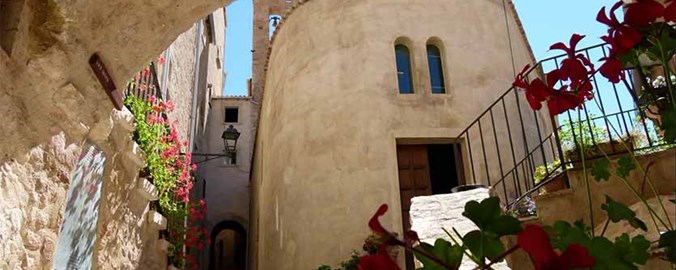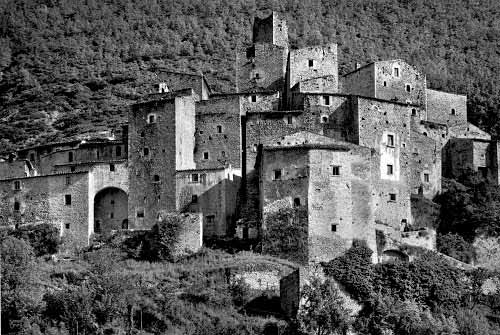
Italy's Revival of Its 'Sleeping Beauties'
Italy is undergoing an amazing revival of 20,000 ghost towns – so-called 'sleeping beauties' – left abandoned by residents and becoming derelict for decades.
Now, recognised as an important potential tourism resource that could help boost employment and revamp Italy's ailing economy, the sleeping beauties' prince has arrived in the form of private investment capital, set to resurrect them from ruin.
According to a report published by the Symbola Foundation, a group that advocates economic development in Italy, culture and art could bring in an additional €214bn annually if better exploited in the country. Ermete Realacci the Foundation's president said: "Culture must be the fuel of our economy".
The now picturesque Italian village of Castello di Postignano is among the first to receive a significant facelift that has seen the area transformed into a tourist hotspot. Located in the 'green heart of Italy' between Tuscany and Lazio in the breathtaking Umbria region, Castello di Postignano sits in picture-perfect elegance among the rolling hills, making it hard to believe the village had been completely empty for almost 50 years.
Castello di Postignano is a medieval village dating back to 1000 AD nestled on a wooded hill that offers incredible views of the fertile plains around the Argentina River. For many centuries this was home to farmers and artisans until the last inhabitants finally left the village in 1967 after seismic activity left buildings crumbling and locals fleeing.

Castello di Postignano before it's resurrection
The village's extensive renovation began in 2007 with the focus on preserving its unique historic ambience as far as possible. The works revealed frescoes from the 15th century and numerous valuable artefacts and historic structures.
Today, the village stands restored to its former glory including its original lookout tower surrounded by a cluster of pastel-coloured houses, pretty piazzas and a great choice of trendy bars, shops and eateries, appealing to all tastes.
Gennaro Matacena, half of the architectural duo from Naples who spent nearly a decade obtaining permits and undertaking construction to resurrect Castello di Postignano after being bewitched by the village's beauty said: "What better life project could there be for any architect than to be given the chance to reshape an entire hamlet how he pleases?".
With so much scope in Italy for investment in its ghost-village revival, foreign buyers are leading the charge in the absence of public funds available to renovate deserted sites. Italian-Swedish businessman Daniele Kihlgren is one of the pioneers of the movement to keep alive Italy's lost treasures, making it his mission to rescue forgotten hamlets in the south of the country.
For centuries these towns have represented "a minor, secondary heritage that has been neglected and fallen into oblivion", he says. "They're not part of the grandeur of cities such as Rome and Florence but of a peripheral world made of farmers and shepherds that has slowly gone extinct".
To date, Kihlgren has transformed two ghost villages into luxury resorts – one is Matera in Basilicata which was also the set for Mel Gibson's film The Passion of the Christ; the other is Santo Stefano de Sessanio located in the rugged hills of Abruzzi, both transformations leading to jobs for locals who have opened restaurants and artisan's boutiques at the updated resorts.
The value of the restyled buildings has tripled according to Kihlgren, with the appeal of original features belying spacious and contemporary interiors, currently ticking the boxes for increasing numbers of buyers.
Back in Castello di Postignano, former residents who have returned to visit what has become a resort destination have noticed a significant change. Some village homes and buildings once used for pressing grapes, harvesting truffles or housing students or prisoners are now fully furnished and include modern comforts such as Wi-Fi and satellite TV. There's also an elevator carved into the rock that goes up and down two layers of the village.
Parties, concerts and conferences are organised inside the frescoed Church of SS Annunziata and there are outdoor panoramic swimming pools, a gourmet restaurant and wine bar, not to mention a museum, small art galleries and artisan boutiques with ceramics and textiles. There's also a spa and sports centre in the pipeline making this an extremely well-developed resort destination in the heart of Italy's gorgeous countryside.



